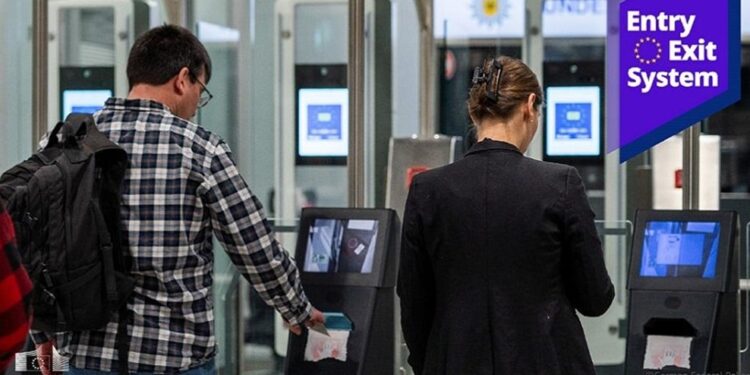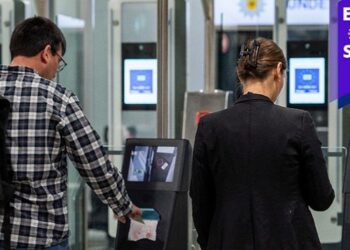From this Sunday, October 12, 2025, travelers to the Schengen area will be subject to the European Entry/Exit System (EES – Entry Exit System), a digital device which will replace the manual stamping of passports.
The French embassy in Tunisia announced, in a press release published Friday October 10, the progressive implementation of the European Entry/Exit System (EES) from October 12. This new tool, designed by the European Union, aims to automate and secure controls at the external borders of the Schengen area.
Concretely, the traditional manual stamp on the passport will give way to electronic recording. At each border crossing, the traveler’s data – date and place of entry or exit, authorized duration of stay – will be kept in a secure European database.
This system will make it possible to monitor short-term stays more precisely, in particular the 90 days authorized out of 180 for nationals of third countries, including Tunisia.
The embassy specifies that travelers will not have to take any additional steps: the information will be collected automatically at the time of the check. The objective is to make passages faster, while reducing the risks of fraud and overstay.
This reform is part of a broader European strategy of modernization and border security. According to the European Commission, the implementation of the EES will be done gradually to allow airports, ports and land stations to adapt to new technologies.
For Tunisian citizens holding a Schengen visa, entry conditions remain unchanged. Only the check-in and check-out procedures will be changed.
The embassy invites travelers to consult the official website travel-europe.europa.eu/fr/ees/ltr before their departure to know the latest updates.
The launch of the EES precedes the implementation, planned for 2026, of the European Travel Authorization System (ETIAS), which will require prior electronic authorization for visa-exempt third-country nationals.
Who is the EES system for?
It concerns citizens of non-EU member countries, subject to visa or not, who are carrying out a short stay (maximum 90 days over a total period of 180 days). The system does not replace the visa requirement.
What personal data is recorded?
- Entry and exit date
- Entry and exit time
- The place of entry and exit
- Names of the national
- The national’s passport number
- The national’s photograph
- The national’s fingerprints
- The potential decision to refuse entry




